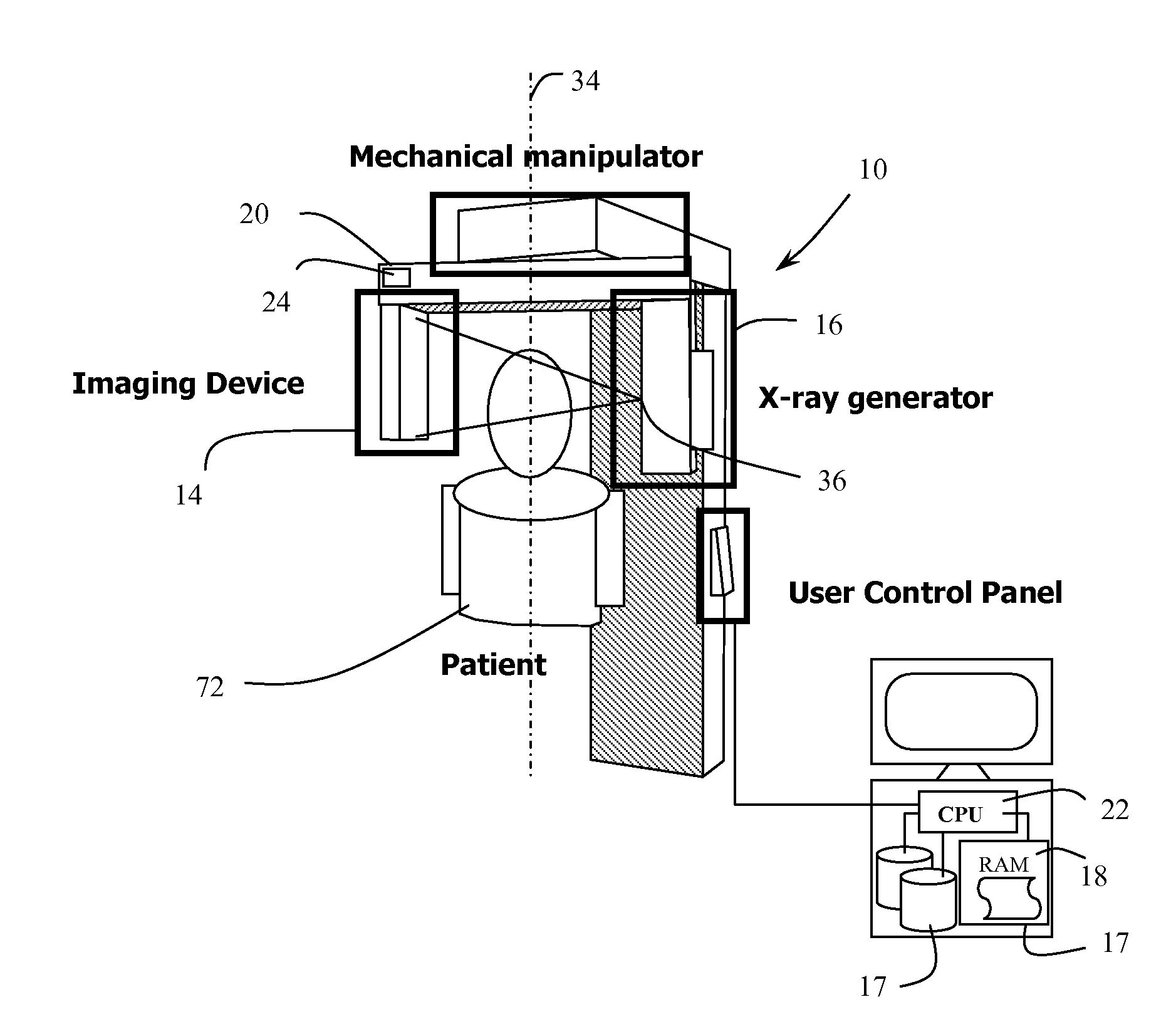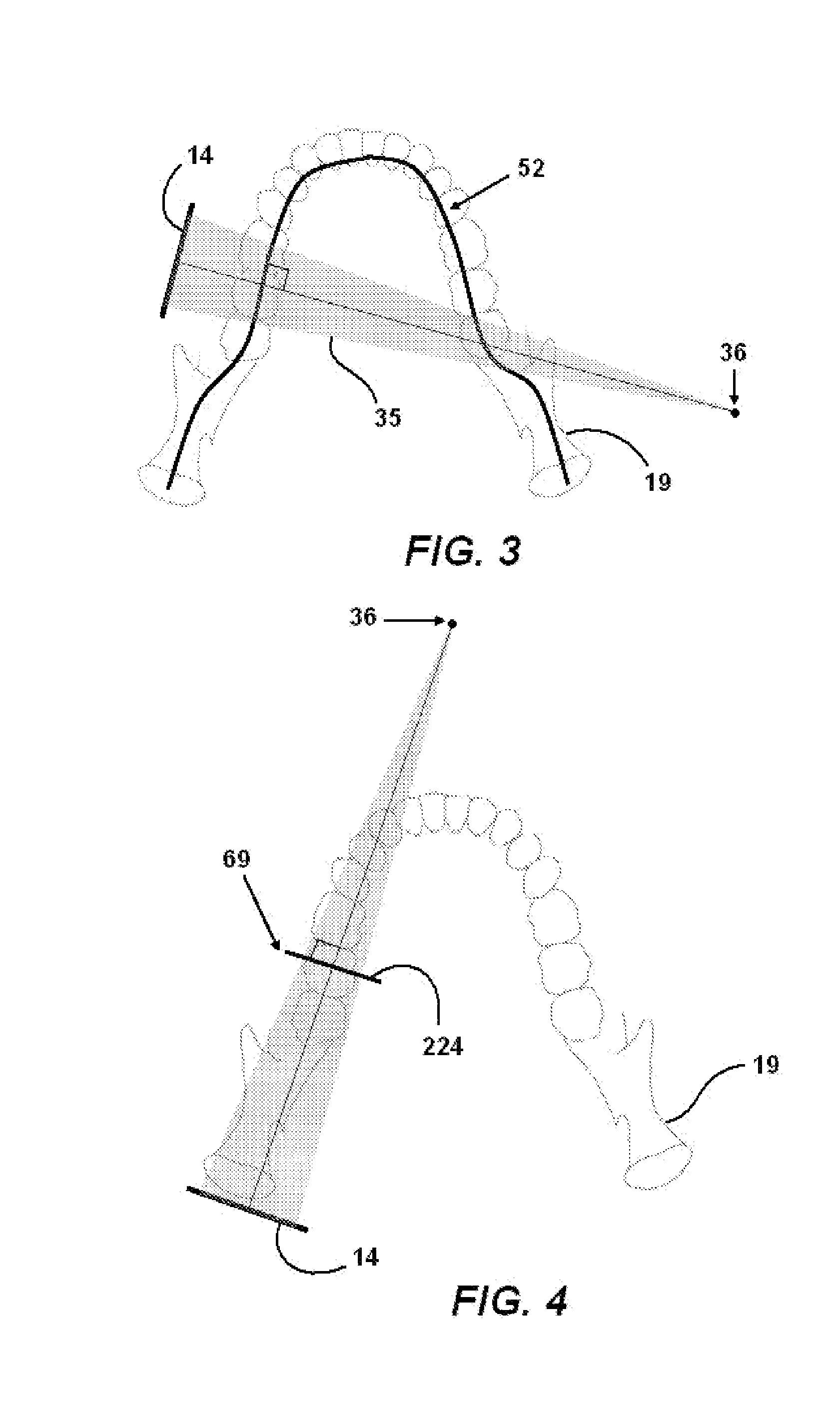Extra-oral digital panoramic dental x-ray imaging system
a digital panoramic and dental x-ray technology, applied in the field of digital dental panoramic imaging apparatuses, can solve the problems of insufficient system speed for continuous exposure, inability to view real-time, and cost burden that only large clinics can afford, and achieve the effect of sufficient speed for storag
- Summary
- Abstract
- Description
- Claims
- Application Information
AI Technical Summary
Benefits of technology
Problems solved by technology
Method used
Image
Examples
example i
[0060] For typical a dental application of the present system 10, the elongated CMOS / detector sensor had an active slot 520 (FIG. 6a) of 150 mm×6.4 mm in size. The pixel size w in the scanning direction was typically 100 um, although smaller pixel sizes are achievable (but considered as unnecessary in dental extra-oral imaging). The exposure scan time was 5 to 30 seconds, with a frame rate of 200 to 300 fps (frames per second). The sensor moves about half a pixel size to less than one full pixel size w between consecutive frames 40. At that rate, the output frame data 40 can reach more than 750 MB for the entire scan which is a large data set, but still is quite manageable. It is essential therefore that the frame rate not be too high as this would not add anything to the image resolution and would only make data transfer and processing difficult, if not impossible, in real-time.
[0061] A video or frame grabber 125, based on a technology such as “CAMERALINK”™, was installed to a PCI...
example ii
[0066] In another embodiment, the X-ray imaging device 14 produced multiple frames 40 during an exposure with time intervals during which the detector pixels were shifted by at least half a pixel length or more in the direction of scanning 104. Additionally, the detector pixels were shifted by at least half a pixel size, but less than the size w of a full pixel in the direction of scanning.
[0067] In accordance with another embodiment of the invention, all the individual frames 40 are stored temporarily in a RAM-type fast memory 18, and therefore it is possible to reconstruct the final image 12 with a modified position profile, after the actual exposure and after the initially displayed panoramic image 12. It is known of course, that the data can additionally be stored long term on a data storage system 22 such as a hard drive, CD or DVD and retrieved later back into fast memory. However, storing all the data on RAM 18 makes processing fast and efficient. Such is now possible becaus...
PUM
 Login to View More
Login to View More Abstract
Description
Claims
Application Information
 Login to View More
Login to View More - R&D
- Intellectual Property
- Life Sciences
- Materials
- Tech Scout
- Unparalleled Data Quality
- Higher Quality Content
- 60% Fewer Hallucinations
Browse by: Latest US Patents, China's latest patents, Technical Efficacy Thesaurus, Application Domain, Technology Topic, Popular Technical Reports.
© 2025 PatSnap. All rights reserved.Legal|Privacy policy|Modern Slavery Act Transparency Statement|Sitemap|About US| Contact US: help@patsnap.com



